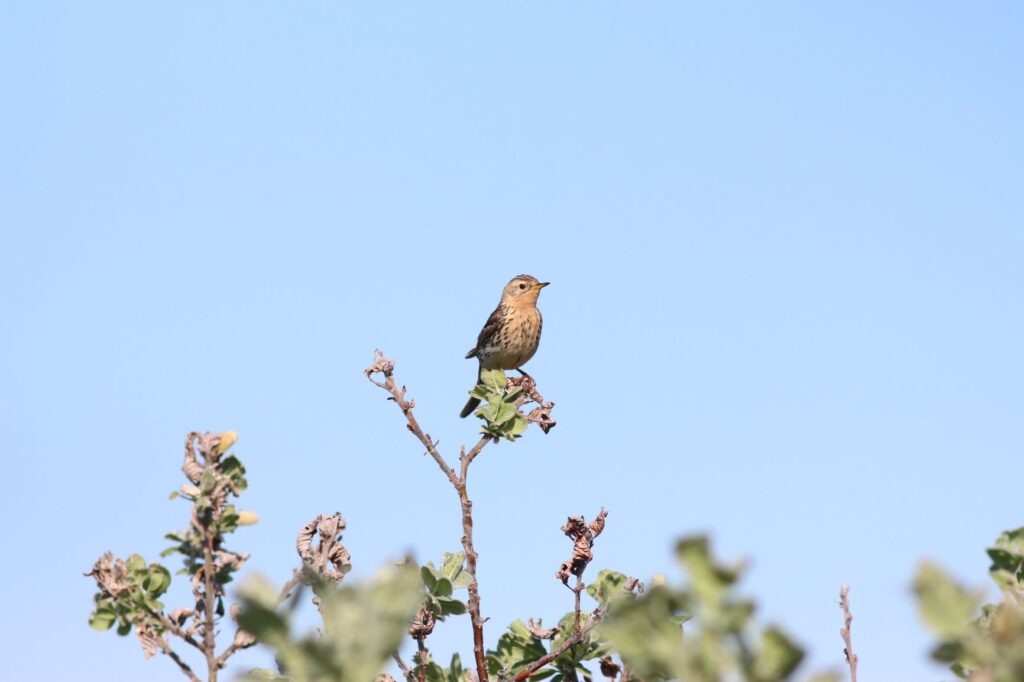Your guide in Varanger
Your guide in Varanger
“Let me help you find your target species, or let us find the best location to sit in, and watch, as wildlife unfolds around us”
“Let me help you find your target species, or let us find the best location to sit in, and watch, as wildlife unfolds around us”

Varanger is the furthest northeastern part of Norway. The climate in the south of Varanger varies wildly between seasons, reaching extremes of 30°C both below and above freezing. In Varanger, you can experience the northern taiga, tundra and Arctic coastline within a day’s drive. Varanger is famous for its wintering population of Steller’s and King Eiders. However, the wide variety of unique bird species have made Varanger one of the top birding destinations of the world.
In spring both wintering and breeding birds meet in Varanger, as the first migrants return from their wintering grounds. The sounds of Meadow Pipits, Wheatears, thrushes and wading birds echo out across the tundra and taiga forest. In this season, the weather is changing. Some days the sun can be shining and the snow quickly melting, while on other days storms can hit the landscape. Towards mid-May, the sun no longer set below the horizon and the 2 months of midnight sun starts.
Varanger in summer is teeming with life. The midnight sun energises all living creatures and birdwatching can be enjoyed 24 hours. Summer is the time when the high tundra becomes available for exploring. Beautiful birds in their full breeding plumage is a particular treat. In May and June the lekking Ruff is one of the most amazing spectacles to witness. In years with good numbers of rodents the Long-tailed skua, Ruff-legged Buzzards and owls like the Hawk Owl and Short-eared Owl, will hatch in great numbers. Also, the rarely seen Snowy Owl will breed in the very remote parts of the peninsula. The rodents also give the Ptarmigans and other birds some relief from predators, and they will increase in numbers.

Varanger is the furthest northeastern part of Norway. The climate in the south of Varanger varies wildly between seasons, reaching extremes of 30°C both below and above freezing. In Varanger, you can experience the northern taiga, tundra and Arctic coastline within a day’s drive. Varanger is famous for its wintering population of Steller’s and King Eiders. However, the wide variety of unique bird species have made Varanger one of the top birding destinations of the world.
In spring both wintering and breeding birds meet in Varanger, as the first migrants return from their wintering grounds. The sounds of Meadow Pipits, Wheatears, thrushes and wading birds echo out across the tundra and taiga forest. In this season, the weather is changing. Some days the sun can be shining and the snow quickly melting, while on other days storms can hit the landscape. Towards mid-May, the sun no longer set below the horizon and the 2 months of midnight sun starts.
Varanger in summer is teeming with life. The midnight sun energises all living creatures and birdwatching can be enjoyed 24 hours. Summer is the time when the high tundra becomes available for exploring. Beautiful birds in their full breeding plumage is a particular treat. In May and June the lekking Ruff is one of the most amazing spectacles to witness. In years with good numbers of rodents the Long-tailed skua, Ruff-legged Buzzards and owls like the Hawk Owl and Short-eared Owl, will hatch in great numbers. Also, the rarely seen Snowy Owl will breed in the very remote parts of the peninsula. The rodents also give the Ptarmigans and other birds some relief from predators, and they will increase in numbers.
Contact
Kate J. Utsi
(+47) 953 08 913
post @ njallasiida.no
Send me a request, and I will get back to you very soon.
Contact
Kate J. Utsi
(+47) 953 08 913
post @ njallasiida.no
Send me a request, and I will get back to you very soon.
